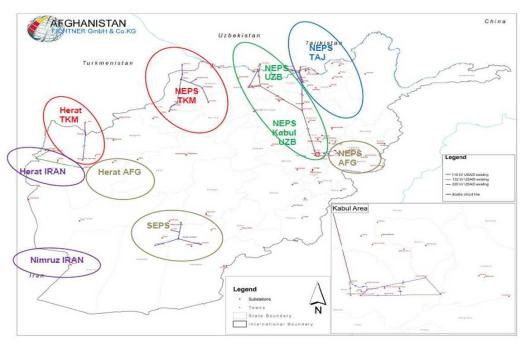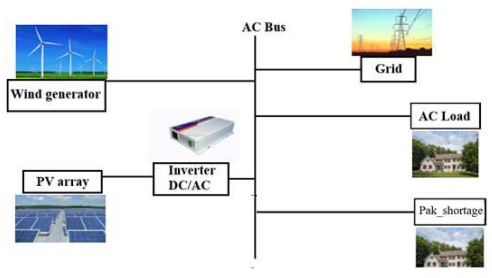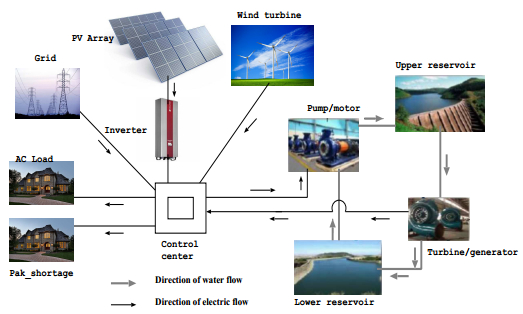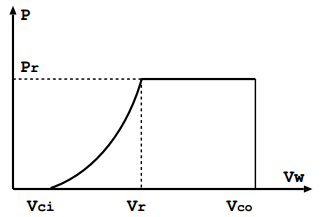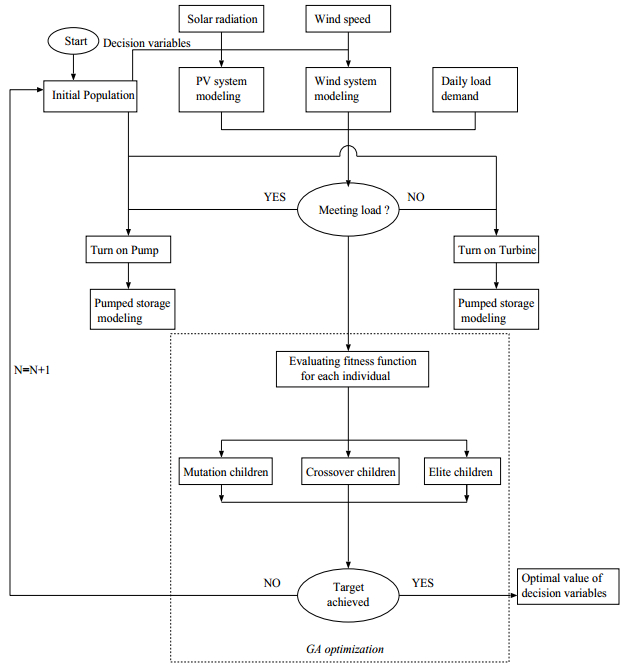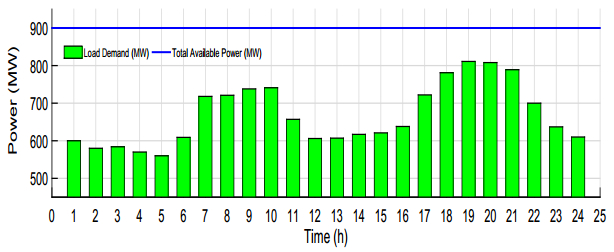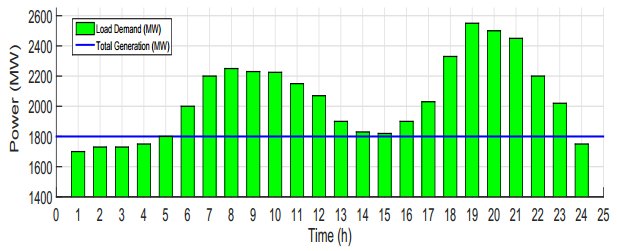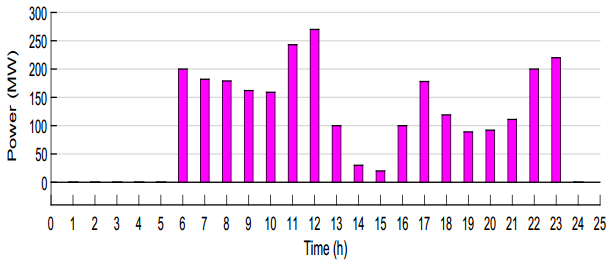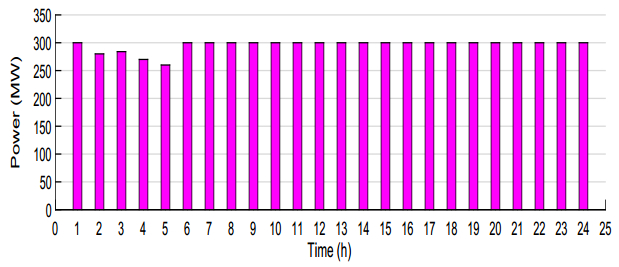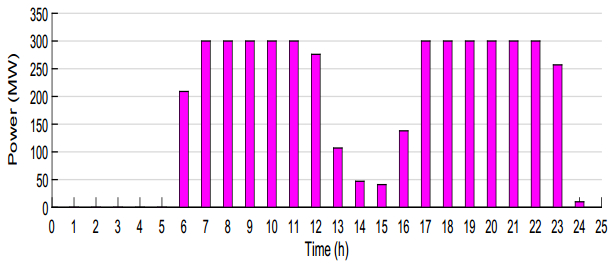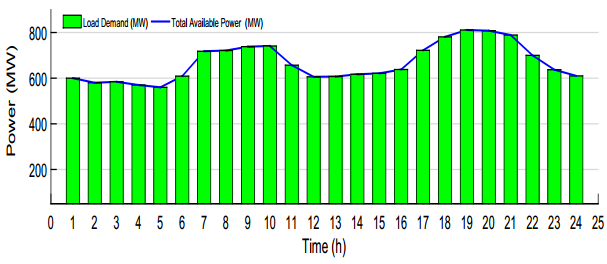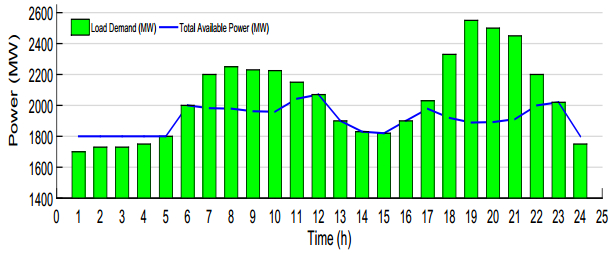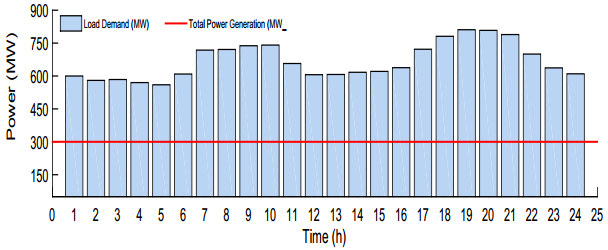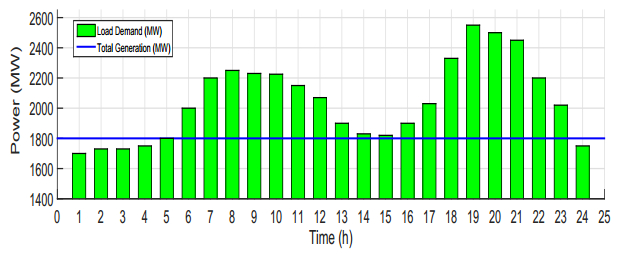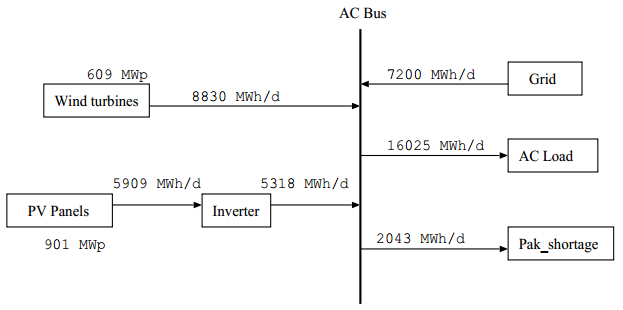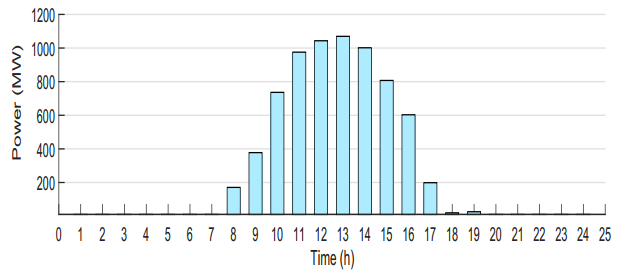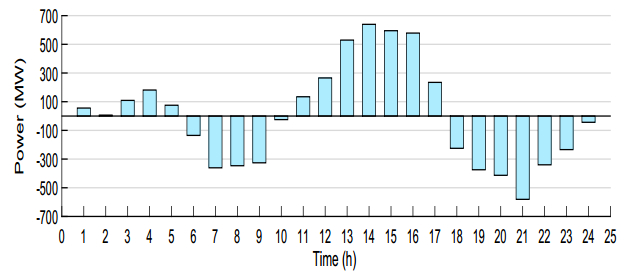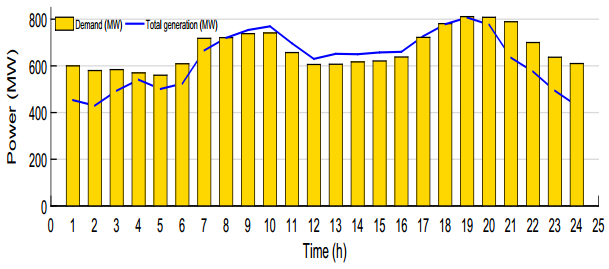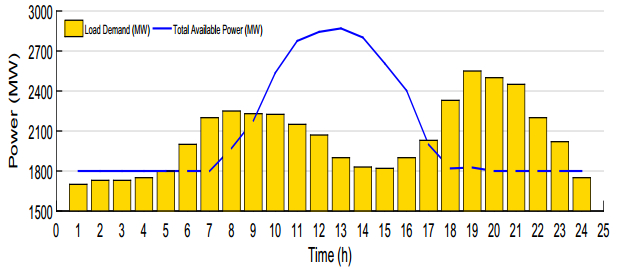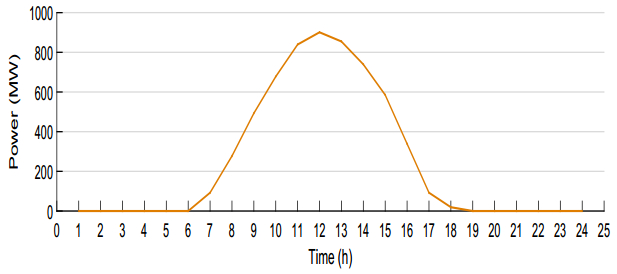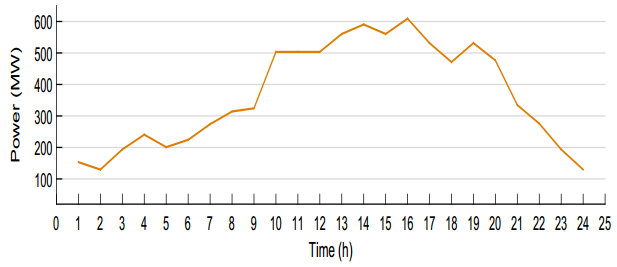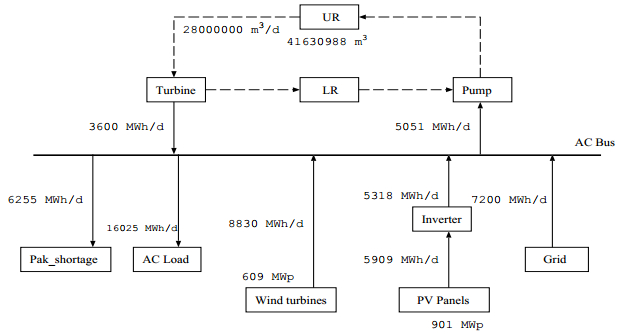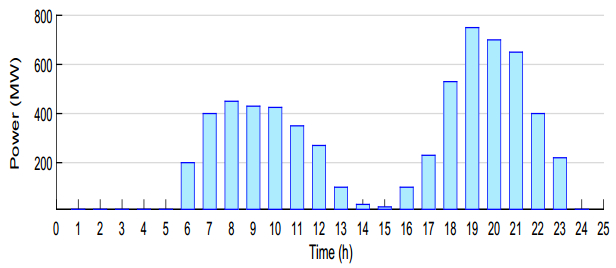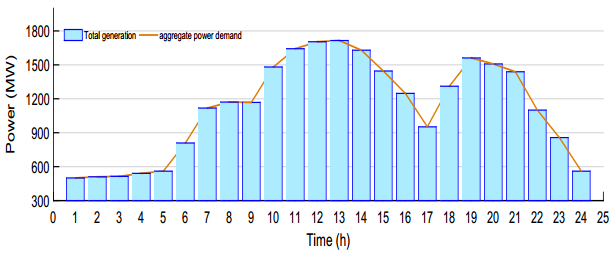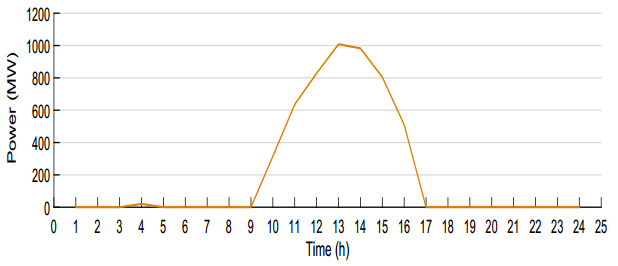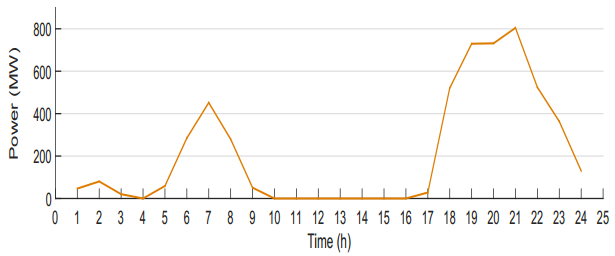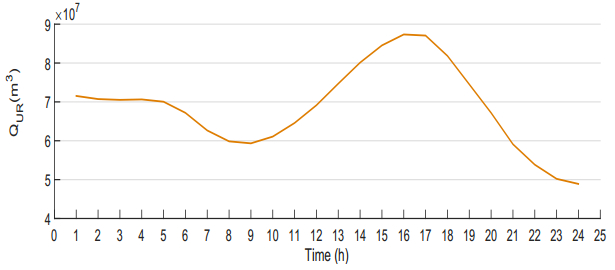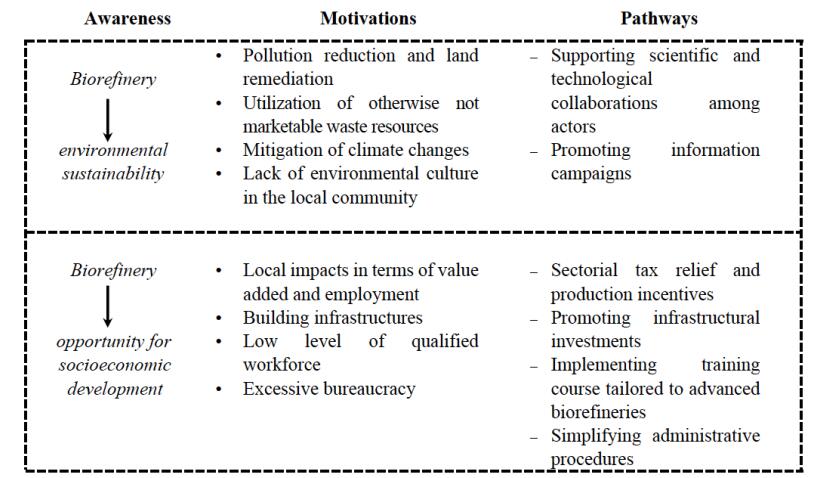1. Introduction
South Asia is home to 25% of the world's population and has one of the fastest growing regional economies in the world [1]. The region's dominant economy, India, is targeting annual GDP growth of 10% and the growth rates of the two largest countries after India, Pakistan and Bangladesh, exceed 7% [2,3,4]. Electricity demand in all these three countries, and in the region as a whole is outstripping supply. Pakistan and India, the countries closest to Afghanistan, Central Asia and Iran, are all looking for imports of electricity as long-term options for their energy supply mix [5].
Pakistan is experiencing its worst power crises in years with year-round load shedding of around 4000-5000 MW in 2014 due to a severe shortage of generation capacity. This crisis is severely hindering economic growth and social development. Put simply; there is an urgent demand for reliable, affordable, and sustainable power to support the country's economic growth and employment needs [6]. To mitigate this shortage, Pakistan signed memorandums of understanding (MOUs) with Turkmenistan and Uzbekistan to import 1,000 MW of power through Afghanistan. Unfortunately, these MOUs have not progressed to original power purchase agreements. At current, there is ongoing regional efforts support by multilateral institutions to establish regional power trading agreements between Central Asian and South Asian countries (CASAREM and CASA-1000) [7,8]. CASA-1000 is efforts to import 1,000 MW power to Pakistan from Kyrgyzstan and Tajikistan (Figure 1). However, because of legal, commercial, security and infrastructure challenges, these attempts have not successfully resulted in actual deals. To provide more quick relief, U.S. Agency for International Development (USAID) has funded some technical assistance and capacity building endeavors designed to achieve short and long-term improvements to Pakistan's power system. These activities attempt to add MW to the Pakistan electricity grid by improving system governance and operation and reduce system losses. These improvements, while targeted and beneficial, are inadequate to meet the energy demands of Pakistanis growing economy and population.
The Government of Pakistan is employing various measures to overcome the problem of capacity shortages. These include development and refurbishment of existing plants, initiation of new private power plants, encouraging renewable energy utilization, development of rental power plants, and acquisition of power from captive power plants. At the end of Pakistan's Fiscal Year 2008/09, total installed generation capacity was 20,306 MW, of which 13,370 MW was thermal, 6,474MW hydro, and 462 MW nuclear. Present estimates imply that over 90,000 MW of generation capacity will be required by 2030. Even with identified potential plants coming online, there will be a roughly 10,000 MW deficit by 2030 [10]. Given the massive capital requirements and institutional issues, it will be difficult to build all the additional generation capacity required.
On the other hand, Central Asian Republics and Iran are energy rich countries. Besides 100% accessibility to electricity, these countries have surplus power [11]. Afghanistan is a mountainous land-locked country located between South and Central Asia bordering the Islamic Republic of Iran from the west, Pakistan from south and east, China from northeast and Tajikistan, Uzbekistan, and Turkmenistan from North. Afghanistan is a key country in Central and South Asia, and its ability to be a bridge between them is critical to the development of any form of inter-regional cooperation, including in the power sector. Afghanistan can gain significance revenues for its economy from energy imports and exports. Besides, Afghanistan has large renewable energy potentials. According to preliminary estimation of the National Renewable Energy Laboratory of the United States, Afghanistan's technical solar potential is over 220 gigawatts (GW), and technical wind potential exceeds 66 GW. In addition to solar and wind, the country is also endowed with tremendous hydroelectric, biomass and geothermal potentials: hydropower potential alone is estimated at 23 GW [12]. By exploiting its RERs, Afghanistan can not only meet its power shortages but also can export it to energy deficit countries to gain remarkable revenue.
2. Afghanistan Power System and Its Power Trade With Neighboring Countries
The existing power system of Afghanistan is operated in islanded areas depending on the source of generation and impacts. As depicted in Figure 2, currently, there are within Afghanistan three distinct geographically separate transmission networks:
• The Northeast Power system (NEPS): Nangarhar/Kabul/Parwan/Ghori/Balkh (Presently supplied by existing hydropower projects, a minor share from diesels and a major share of imports).
• The Southeast Power System (SEPS): Kandahar and surrounding region (Currently supplied by existing hydropower projects).
• Herat (Presently covered by imports from Iran and Turkmenistan). In addition, several towns (such as Aybak and Ghazni) have their own diesel plants and distribution [13,14,15].
As aforementioned, the Northeast Power System of Afghanistan (NEPS) is supplied by existing hydropower and diesel projects of Afghanistan and imported power from Uzbekistan and Tajikistan. Hydropower plants in Afghanistan are seasonal; during winter, there is not enough water for power generation. On the other hand, Tajikistan exports their surplus power only during summer. Tajikistan's power supply is dominated by hydropower plants. During winter, due to the seasonal problem of hydropower plants and high load demand for heating, Tajikistan exports limited amount of electricity. So, most of power is provided by Uzbekistan. The amount of electrical energy from Uzbekistan cannot cover the load demand during some hours. As a result, the NEPS has faced most hours blackout during winter. However, this problem doesn't exist in summer. In summer, Tajikistan has excess power, also up to some extent, Afghanistan has its own generation of electricity [13]. Thus in summer, the NEPS of Afghanistan has surplus power which can export to energy deficit countries such as Pakistan which has already faced energy shortage.
This paper describes short-run and long-run optimal power trade model between Afghanistan and Pakistan which depicts a potential benefit for the both countries. The actual load curves of the two countries are taken into consideration and short-run, and long-run optimization models are solved, based on real data, to obtain optimal power export along with the optimal capacity expansion. In the rest of the paper, both models will be described and the optimal results will be presented.
3. Modeling Regional Electricity Markets
Regional power markets are modeled based on short-run and long-run approaches. Cost minimization techniques are usually used. In short-run approach, the capacity expansion will not be taken into account in the planning horizon. The length of the short-run period can be chosen from a few hours up to one year. Also, by employing short-run model, the profitability of developing power trade among the studied countries can be examined in the present status and without any change in their generation capacity. The purpose of long-run planning is to decrease the generation and transmission capacity expansion costs in the region during the planning horizon. The period of the long-run horizon can be selected from 5 to 30 years.
In the long-run model, power system expansion is permitted, as well as expansion of transmission lines. The objective function includes costs of existing power plants and construction costs for new power plants and new inter-connecting lines [16,17,18].
3.1. Short-run model
In this paper, in the short-run model, the objective function is to maximize the profit from selling and power export minus buying and power import over study periods. The fitness function in the short-run model can be written mathematically as follows:
Where
|
Profit=∑t∑z¯c(z,zp,t)PF(z,zp,t)−¯c(za,z,t)PF(za,z,t)
|
(2)
|
For the fitness function (2), the variables and constants are defined as bellow. Based on the notation used in this paper, every constant is specified with a bar.
¯c(z,zp,t): Price of electricity/MWh export from country z to country zp at time t ($).
PF(z,zp,t): Power export from country z to country zp at time t (MWh).
¯c(za,z,t): Cost of power/MWh import of country z from country za ($).
PF(za,z,t): Power flow (import) from country za to country z at time t (MWh).
The fitness function (2) is maximized based on the following constraints which have to be considered during optimization:
1. The total power generation of the country z and its power import from the other countries (including transmission losses) and unmet demand at hour t is equal to aggregate power demand of the country plus its export to the other countries at that time.
|
∑zP(z,t)+∑zaPF(za,z,t)⋅(1−¯Ploss(za,z))+UD(z,t)=¯D(z,t)+∑zpPF(z,zp,t)
|
(3)
|
Where:
P(z,t) denotes the power generation of the country z at time t,
¯Ploss(za,z) depicts line loss from za to z (%),
UD(z,t) shows the unmet demand of the zth country at hour t,
And ¯D(z,t) indicates demand in country z at time t.
It is necessary to be mentioned that although the transmission loss function is a quadratic function of the power flow between the terminal buses, but always the interconnection line is designed to cause a loss not more than a few percents of the power flow. The normal standard for this percentage is usually less than 5%.
2. Optimal power trade from the country za to the country z at time t is minimally equal to the maximum power export capacity of the country za.
Where ¯Cap(za) denotes the maximum power export capacity of the country za.
3. Amount of the power from the country za to the zth country at hour t should be minimally equal to the capacity of interconnecting transmission lines between them.
|
PF(za,z,t)≤¯PFcap(za,z)
|
(5)
|
Where ¯PFcap(za,z) is the capacity of existing interconnecting transmission lines between the countries.
4. The Aggregate amount of electricity export from the zth country to the country zp at time t is equal to the total shortage of the country zp for that hour t.
|
∑zpP(zp,t)+PF(z,zp,t)=¯D(zp,t)
|
(6)
|
Where:
¯D(zp,t) shows the demand in the country zp at hour t,
P(zp,t) depicts the total power generation in zp at time t.
3.2. Long-run model
In this paper, in the long-run model, the objective function is to minimize the life cycle cost of the hybrid renewable energy system of the country z minus the total export revenue from selling power to country zp over study periods and is formulated as bellow:
|
Min.[LCC−c(PF(z,zp))]
|
(7)
|
Where
|
LCC=∑C+OMnpv+Rnpv−Snpv
|
(8)
|
|
c(PF(z,zp))=∑t∑z¯c(z,zp,t)PF(z,zp,t)
|
(9)
|
Where LCC is the life cycle cost of the hybrid renewable energy system of the country z ($) (detailed explanation is in section 5) and c(PF(z,zp)) depicts the total export revenue of country z from selling electricity to country zp over study periods ($).
As it can be seen from the above fitness function, in the long-run model, power system expansion is allowed. The objective function now includes the costs for new power plants (the total life cycle cost of the hybrid renewable system) and the total profit from power export.
In addition to the constraints (4), (5) and (6), applied in the short-run model, the following constraint should also be taken into consideration during the long-run model optimization:
1. The aggregate power generation of the zth country plus its new generation from the hybrid renewable energy system at time t is equal to the total power demand of the country and its export to the country zp at that hour.
|
∑zP(z,t)+∑zPGH(z,t)=¯D(z,t)+∑zpPF(z,zp,t)
|
(10)
|
Where PGH(z,t) is the power generation of the hybrid renewable energy system of the country z at time t.
In the long-run model in this paper, two cases will be considered. In the first case, solar and wind renewable energy resources of the country is introduced as a hybrid renewable energy system and for the second case solar, wind, and pumped hydro energy storage (PHES) is considered as a hybrid renewable energy system. For the both cases, the aforementioned objective function and constraints are applied. Moreover, the difference between the cases will be discussed in the result part. Each case is described as follows:
Case 1: Afghanistan is endowed with significant RERs, which it could exploit not only to meet its power demand but also to export to energy deficit countries to earn remarkable profit. In case 1, solar and wind renewable energy resources are introduced. The configuration of the proposed optimized model is depicted in Figure 3. The system consists of the grid (NEPS of Afghanistan excluding power of Tajikistan and Uzbekistan), photovoltaic (PV) array, wind turbines (WTs), Afghanistan power demand, power shortage of the country zp (Pakistan in this paper), and an inverter.
Case 2: In this case, the most traditional and mature storage technology, pumped hydro energy storage (PHES) is introduced to support the solar-wind system. The optimization model for case 2 is shown in Figure 4. The components of the model are the grid (NEPS of Afghanistan excluding imported power from Tajikistan and Uzbekistan), PV array, WTs, Afghanistan load demand, shortage of the country zp, an energy storage system (PHES with two reservoirs, penstocks, pump/motor, and turbine/generator), an inverter and a control station. The entire system is regulated by the control center, which is the essential element in the whole system for load management and energy distribution. The PHES, converting renewable electrical energy into mechanical energy and vice versa, is employed as the energy storage subsystem, which plays an important role in shifting energy excesses, mitigating the intermittency of renewable energy resources, and balancing the fluctuating generation and fluctuating demand as well. The operating principle for the hybrid renewable energy resources with PHES can be summarized as follow: Using excess solar and wind output during periods of surplus on the balance between supply and demand, the pump raises water from the lower reservoir such as sea, river, or an artificial pool, to the upper reservoir (UR). The stored water is then allowed to flow back to the lower reservoir, enabling the production of electricity through a turbine/generator unit to cover the imbalance during periods of inadequate renewable energy production and high electrical demand. In this way, a reliable and sustainable energy supply would be guaranteed for 24 h a day if the charging and discharging rates as well as the capacity are sufficient.
4. Technical and Economical Modeling
Minimization of life cycle cost of the hybrid renewable energy system minus the total income from exporting power over study periods is the objective considered for the both cases in the long-run analysis. In order to find the objective, technical and economical modeling of each component of the system is required. The following subsections describes the modeling of the components.
4.1. Modeling of pumped hydro energy storage subsystem
The pumped hydro energy storage is the only energy storage system used in this study. The PHES subsystem consists of a pump/motor unit and a turbine/generator unit. The volume of the UR and the height difference between the upper and lower reservoir are the most important two variables which are observed in literature [19]. In this paper, the height difference is fixed at 60m, and the sea is considered as the lower reservoir.
4.1.1. Pumping mode: pump/motor unit
The water flow rate elevates from the lower reservoir by the pumps is expressed in Eq. 11. The power source is directly supplied by the hybrid renewable energy generator. The water pumping can be compared to the charging rate of battery bank [20,21].
|
qp(t)=ηp⋅Pp(t)ρ⋅g⋅h=cp⋅Pp(t)
|
(11)
|
Where Pp(t) is the input power from the hybrid generator to the pump; h is the elevating height (m); g is the gravitational acceleration (9.81 m/s2); ρ is the density of water (1000 kg/m3); ηp is the overall pumping efficiency; and cp is the water pumping coefficient of the the unit (m3/kWh).
4.1.2. Generating mode: turbine/generator unit
During energy deficit periods, the output from the turbine generator unit is [20,21]:
|
Pt(t)=ηt⋅ρ⋅g⋅h⋅qt(t)=ct⋅qt(t)
|
(12)
|
Where ηt is the overall efficiency of the turbine/generator unit; qt(t) is the water volumetric flow rate input into the turbine (m3/s); ct is the turbine generating coefficient (kWh/m3).
4.1.3. Upper reservoir (UR)
The water quantity stored in the UR should be enough to meet the power demand of the system during high electrical demand and insufficient hybrid energy generator. The quantity of water stored in UR at any time t is determined by [20,21]:
|
QUR(t)=QUR(t−1)(1−α)+qp(t)−qt(t)
|
(13)
|
Where α is the evaporation and leakage loss. The α is similar to the self-discharge of battery bank and for simplification this is neglected in the above equations. The water level in the UR can be considered as the state of charge (SOC) of the storage tank. Therefore, the SOC of the storage system is expressed as:
The water quantity of upper reservoir is subject to the following constraints:
Where QURmin and QURmax are the minimum and maximum limits of the UR.
In this study, the minimum storage capacity QURmin is set as zero which is usually being considered. However, in some literature a minimum limit of water quantity is considered to maintain pump press, to retain efficiency, and to support emergency reserve.
4.2. PV array output power
The following is the equation for the power supplied by a set of PV panels at hour t [13]:
Where ηPV denotes PV panels efficiency, APV is the total area occupied by PV panels in m2 and S(t) is the hourly solar insolation in kW/m2.
4.3. Wind generator output power
Figure 5 depicts a model for output power calculation of wind turbines. There is no power generation from wind turbines below cut-in speed (Vci). As wind speed increases above cut-in speed, the power generated by the turbines increases as the cube of wind speed, until reaching a maximum point at rated speed (Vr). This is the power the wind turbine is designed for, rated power (Pr) in kW. As it is seen from the figure, at some point, the wind speed is very strong that there is danger to the wind turbine. This is called cut-off speed (Vco), and the machine should be stopped. The mathematical model of this behaviour is as follows [13]:
|
Pw(t)={0v(t)⩽Vci or v(t)⩾VcoPr v3(t)−V3ciV3r−V3ciVci < v(t) < VrPrVr< v(t) < Vco
|
(17)
|
Where v(t) is the wind speed in an instant of time t in m/s. The rated power of wind turbine generator at hour t is calculated by the following equation [24]:
|
Pr=12⋅Cp⋅ρa⋅ηg⋅Aw⋅V3r
|
(18)
|
Where Cp is power coefficient and it is the ratio of the power output of a wind generator divided by maximum power. ρa is the air density in kg/m3, ηg is the efficiency of wind turbine, and Aw is the total swept area by turbines' blades in m2. As it is seen, wind power is proportional to the cube of wind speed, so even modest increase in wind speed can affect the wind power. In order to get higher wind output, one way is to mount the turbine on a taller tower. Surface winds are getting slowed by high irregularities such as forests and buildings. The following equation is for the effect of roughness of the earth's surface on the wind speed [23]:
Where V and V0 are the wind speeds at height h and h0 respectively, and α is the roughness factor. The α value is less than 0.1 for flat land, water or ice and more than 0.25 for forested landscapes.
4.4. Modeling of power generation and load consumption: Case 1
During the system modeling, the energy balance model of the hybrid solar-wind power generation system at time t is:
Where Phl(t) is the output power of the hybrid renewable resources directly delivered to the load.
In case 1, the load demand is only provided by the solar-wind hybrid system. So, the energy balance model of load consumption is:
4.5. Modeling of power generation and load consumption: Case 2
In case 2, the model for energy balance of the hybrid solar-wind power generation system at time t is expressed as:
|
PPV(t)+Pw(t)=Phl(t)+Pp(t)
|
(22)
|
Also it is assumed that the load demand is mainly covered by two sources, therefore the model of energy balance for load consumption is:
Where Phl(t) is the power output directly delivered from the hybrid renewable energy generation and Pt(t) is the power produced by the turbine/generator unit. Pt(t) is zero whenever the net load is negative or zero, thus no supplementary energy is needed. And whenever the net load is postive, the pump-turbine set will be started and the Pt(t) will be positive value.
5. Economic Analysis
The life cycle cost of each component of the hybrid renewable energy system is the sum of its capital cost, operating and maintenance cost and replacement cost minus salvage cost [13,24]:
|
LCC=C+OMnpv+Rnpv−Snpv
|
(24)
|
Where C,OM,R and S are the capital cost, operating and maintenance cost, replacement cost and salvage cost in $ respectively. The npv subscript means the present value of each factor.
Now the total life cycle cost of the hybrid renewable energy system is the sum of life cycle cost of all the components :
For case 1:
For case 2:
|
LCC=LCCPV+LCCW+LCCPHES
|
(26)
|
The life cycle cost of each component is obtained as follows:
5.1. PV array LCC
The capital cost of the investment for PV array is equal to the initial cost $/m2 of PV array multiplied by the total area m2 occupied by PV array [13,24]:
The total operation and maintenance cost of PV array per year is OMPV=βPV⋅APV, where βPV is the annual operation and maintenance cost in $/m2/year. Now, if the cost grows at an annual rate of μPV, the sum of the net present value for PV array is [13,24]:
|
OMnpv,PV=βPV⋅APV⋅N∑j=1(1+μPV1+i)j
|
(28)
|
Where i is the interest rate and N denotes the project lifetime. By assuming the lifetime span of PV panels equal to the project lifetime, the total replacement cost for PV panels is zero (RPV=0).
By considering the resale price of λPV in $/m2 the total income obtained from resale is [13,24]:
|
Snpv,PV=λPV⋅APV⋅(1+δ1+i)N
|
(29)
|
Where δ denotes the inflation rate. At last, the life cycle cost of PV array is obtained by using equation 24.
5.2. Wind turbines LCC
The life cycle cost of the wind turbines is obtained same as for the PV panels, only except replacing the subscript PV by w.
5.3. LCC of the major components of PHES
The cost of UR is majorly from the reinforced concrete. Similarly, the value of LCC for the UR is obtained same as that explained for the PV panels except the subscript PV is replaced by UR. The initial cost of the inverter is considered to be $4480 (5kW), the same as the replacement and operation and maintenance. The project lifetime is assumed as 20 years. The parameters used in the long-run model are shown in Table 1.
Table 1. Parameters used in the long-run study.
| Interest rate |
i |
|
0.1 |
| Project lifetime |
N |
(years) |
20 |
| Inflation rate |
δ |
|
0.04 |
| Escalation rate |
μpv,w,bat |
|
0.075 |
| Inverter efficiency |
ηinv |
|
0.9 |
| Inverter initial cost |
αinv |
($/5kW) |
4480 |
| Inverter lifetime |
Linv |
(years) |
15 |
| PV initial cost |
αPV |
($/m2) |
519.7 |
| Annual O & M cost of PV |
βPV |
($/m2/year) |
1% of αPV |
| Resale price of PV |
λPV |
($/m2) |
25% of αPV |
| PV efficiency |
ηPV |
|
0.14 |
| Lifetime of PV |
LPV |
(years) |
20 |
| Initial cost of Wind turbine |
αw |
($/m2) |
544.2 |
| Annual O & M cost of wind |
βw |
($/m2/year) |
2% of αw |
| Resale price of wind turbine |
λw |
($/m2) |
30% of αw |
| Wind generator lifetime |
Lw |
(years) |
20 |
| Power coefficient |
Cp |
|
0.59 |
| Air density |
ρa |
(kg/m3) |
1.225 |
| Wind generator efficiency |
ηg |
|
0.85 |
| Reinforce concrete (reservoir) |
αUR |
($/m3) |
170 |
| Reservoir lifetime |
LUR |
(years) |
35 |
| Pump initial cost |
αP |
($/45kW) |
10,749 |
| Pump lifetime |
LP |
(years) |
10 |
| Turbines and pipes |
αT&Pi |
($/kW) |
1000 |
| Turbines and pipes lifetime |
LT&Pi |
(years) |
10 |
6. Sizing and Optimization of the System
The aim of system optimization is to optimally size the system components to meet load demands with possible minimum life cycle cost. Many studies have been carried out about the sizing and optimization of renewable energy systems with different methods [13,22,23,24,25,26]. Among the optimization techniques, the genetic algorithm (GA) method has been widely studied. The GA is an algorithm for the solution of both constrained and unconstrained optimization problems. The GA is based on natural selection (survival of the fittest) [27,28], the process that drives biological evolution. This technique makes a stochastic global search by simulating the metaphor of the actual biological assessment [29]. At each iteration, GA randomly selects individuals from the current population called parents which are evaluated, selected, merged, mate, and mutate along the generations to find the best solution according to the predefined fitness function [30]. The dashed box in Figure 6 indicates the flow chart of GA optimization which is briefly described as follows:
Step 1: Initial Population
GA starts with the creation of random initial populations. The default value of population size in the population options is 20 individuals. However, one can change the population size as want.
Step 2: Calculation of Fitness Function
The individuals are putted into fitness function and its value is calculated.
Step 3: Creating Next Generation
At each iteration, GA uses the current population to create the children that make up the next generation. GA creates three types of children for the next generation: (1) Elite children (2) Crossover children (3) Mutation children.
Step 4: Stopping Conditions for GA
If the stopping condition is met, the algorithm is stopped and the fitness values are selected as optimal solution, otherwise steps 2-3 are repeated.
As it was described before, in this paper, the fitness function for the both cases of long-run model is the LCC of the system minus the total revenue from selling power to the country zp. In the proposed model, in case 1, there are 26 decision variables namely, the total area occupied by the set of PV panels (APV), the total swept area by the rotating turbines' blades (Aw) and the other 24 variables are the optimal power export to country zp. However, for case 2 there are 27 decision variables; APV, Aw, the volume of the upper reservoir (VUR) and same as case 1 the remaining 24 decision variables are the optimal electricity export to country zp. The objective is to find the optimal values for the decision variables to minimize the LCC of the hybrid renewable energy system minus the aggregate income from exporting electricity to country zp, and at the same time meet the load requirement.
7. Simulation Results from the Short-run Model
As it was discussed in the introduction part, Afghanistan is located between the energy surplus areas (Central Asian Republics and Iran) and the energy deficit areas (South Asian). Besides the benefit of the regions, Afghanistan can earn remarkable revenue for its own economy from power imports and exports. The theoretical model of power trade optimization between the countries has been introduced. Now, we present the results derived from application of the model to the case of power trade between Afghanistan and Pakistan. The MATLAB software is used to code and simulate the GA to optimize the model (2) subject to the constraints introduced in (3) to (6). In order to get the optimized value of the fitness function, some data such as daily electricity demand profile and total available power of Afghanistan and Pakistan as well as importing price of electricity and exporting cost of power are needed. Figure 7 shows the daily load profile and total power available for NEPS of Afghanistan. The NEPS of Afghanistan is an isolated power system supplied by three sources. The first source is from Afghanistan's own power plants with the total capacity of 300 MW. The second source is from Uzbekistan with 300 MW potential. The last source is from Tajikistan which can feed the grid with 300 MW during summer. As we can observe from the Figure 7 the NEPS of Afghanistan has surplus power during summer. The daily load profile and total power generation of Pakistan is depicted in Figure 8. As it is seen, during most hours the total power cannot meet the electricity demand. Table. 2 shows the parameters used in this study.
Table 2. Parameters used in the short-run model.
| Parameters |
Tajikistan |
Uzbekistan |
Pakistan |
| Imported power total capacity (MW) |
300 |
300 |
|
| Transmission line capacity (MW) |
400 |
400 |
|
| Price of electricity (import from)($/MWh) |
20 |
60 |
|
| Price of electricity (export to)($/MWh) |
|
|
90 |
In order to find the maximize value of profit, we try to calculate optimal solution for each variable based on solving short-run optimization model. In this model, the decision variables are the optimal power export to Pakistan, optimal power import from Tajikistan and optimal power import from Uzbekistan. The optimal solution for each variable is shown in Figures 9-11.
As we can observe from the simulation result (Figure 9), based on the short-run analysis, Afghanistan can export 2654 MW to Pakistan during summer. Afghanistan's power export to Pakistan is dependent on the load demand of Afghanistan since at first, Afghanistan must meet its electricity needs (Figure 12). Also, it belongs to the periods that Pakistan has power demand, because Pakistan doesn't need to import during its non-peak hours. Moreover, it is based on the availability of power from Tajikistan and Uzbekistan [Figures 10,11], because Pakistan necessitates much power during its peak-periods, but not enough power to import. Afghanistan's such electricity export capability during summer sounds really economical in the short-run for the both countries. However, still Pakistan has electricity shortage (Figure 13), also Pakistan's power shortage problem is year round. It seems the power demand of Pakistan provides potential for more power export by Afghanistan in the long-run.
8. Long-run Model Optimization Results
The long-run model (7) subject to the constraints given by (3)-(6), along with the additional constraint (10) is solved for the both cases and the results are presented. The values of the model parameters used in the long-run analysis are shown in Table 1. The price of electricity export from Afghanistan to Pakistan is considered to be equal to that of the short-run model. Figures. 14 and 15 depict the daily power demand and the total power generation of Afghanistan and Pakistan respectively. The MATLAB software is applied once again to code and simulate the GA to get the optimal values of the decision variables to make the objective function minimized. The results obtained by running this expansion included model, represented in Figures 16-22 for the case 1 and in Figures 23-28 for the case 2 are discussed below:
8.1. Case 1
As the first investigation, the PV and WT system is considered. In this system, PV panels and wind generators produce power to supply the load (the Power shortage of both countries). This case includes 26 decision variables which two of them are continuous variables (APV, Aw) and the other 24 (Optimal power export to Pakistan) are integers. The results obtained by the studied GA are shown in Table 3. The optimal values of APV, Aw are obtained 11000000 m2 and 9878000 m2, respectively. For the optimal PV/WT, the value of LCC is 1.269e+10 $. The total power export to Pakistan is 2043 MW, and the total revenue for Afghanistan from selling this much power is 1.34e+9 $ over study periods. The daily average energy flow in the optimal condition is shown in Figure 16, which is based on the energy balance models in section 4.
Table 3. The results obtained by the GA: Case 1.
| APV(m2) |
Aw(m2) |
LCC($) |
PF(z,zp)(MW) |
c(PF(z,zp))($) |
| 11000000 |
9852000 |
1.269e+10 |
2043 |
1.34e+9 |
The optimal power export to Pakistan at every time t is shown in Figure 17. However, we can observe from the Figure 20, still there is imbalance between Pakistan's load profile and total power generation. This is due to solar and wind resources which are strongly available only in certain times. During Pakistan's deficit periods, there is not enough power available from Afghanistan to export, it means the output power of PV and WT are less (Figures 21, 22). And during their non-peak periods, power available from PV and WT are high. Since the objective is to minimize the LCC of the hybrid renewable energy and at the same to maximize the revenue from selling electricity to Pakistan, the proposed program selects as much power as available for exporting to Pakistan and even in periods that Pakistan doesn't require (Figure 20). Also, the same situation holds for Afghanistan's total power generation and load profile (Figure 19). As mentioned before, these are obviously due to the intermittent characteristic of solar and wind power generations system which prevents the hybrid renewable energy system from being fully reliable without suitable energy storage system. As a result, there are aggregate surplus and deficit power (Figure 18) which have to be kept in storage systems and be delivered in deficit hours to solve the aforementioned problems.
8.2. Case 2
In this case, PHES is introduced as a storage system to keep the surplus power and generate it in deficit periods and solve the problem associated with the case 1. It is obvious that the available PV and WT output is first used to cover the local power demand of Afghanistan and the shortage of Pakistan and accordingly support the pumping units to increase water storage in the UR when PV and WT output exceeds the total load. When energy deficit exists, the turbine units are launched, releasing water from the UR to produce electricity and thus meet the net load of the country and the shortage of Pakistan. In this case there are 27 decision variables, which three of them are continuous variables (APV, Aw, VUR) and the remaining 24 decision variables (Optimal power export to Pakistan) are integers. Table 4 depicts the simulation results solved by the mentioned GA. The optimal sizing of this system is APV = 11000000 m2, Aw = 9878000 m2 and VUR = 41630988 m3. The optimal values of APV and Aw are same as case 1. In this case for the optimal PV/WT and PHES, the value of LCC is 1.9772e+10 $. The total power sell to Pakistan is 6255 MW, and the total income for Afghanistan from exporting the mentioned power is 4.109e+9 $ over study periods. In this case, the daily average energy and water flow in the optimal condition is shown in Figure 23, which is based on the energy balance models in section 4.
Table 4. The results obtained by the GA: Case 2.
| APV(m2) |
Aw(m2) |
VUR(m3) |
LCC($) |
PF(z,zp)(MW) |
c(PF(z,zp))($) |
| 11000000 |
9852000 |
41630988 |
1.977e+10 |
6255 |
4.109e+9 |
Figure 24 shows the optimal power export to Pakistan considering PHES. Now, the daily load profile of Pakistan is met by its total generation plus imported power from Afghanistan. Figure 25 depicts the aggregate power generation of Afghanistan (domestic power plus its new generation from PV, WT and PHES, and the load demand of Afghanistan plus Pakistan's shortage.) As it is seen from the figure, the total demand is covered by the total generation and there is no imbalance between them. Figure 26 depicts the charging power from the hybrid generator to the pump. When there is surplus power from PV and wind, the water is pumped to the UR to increase the water level, otherwise the charging power is zero. In addition, the output power of the turbine generator unit is illustrated in Figure 27. As we can observe, the turbine generator unit produces electricity during high demands and less generation. The quantity of water stored in UR at each hour t is shown in Figure 28. This is same as SOC of battery bank. As we can observe during surplus power the QUR is increased and during deficit periods the QUR is reduced which is released to produce electricity. As a result, in the long-run power trading, by exploiting solar, wind and hydro resources, there is greater potential for export from Afghanistan to Pakistan.
9. Conclusion
The South Asia region have been experiencing dramatic growth in electricity demand and utility infrastructures. The power demand of these countries is outstripping supply, so all of them are looking for import of electricity as their long-term options. Pakistan, the largest country after India in the region is facing worst power crisis which is hampering its economic and social development. This country already has year-round load shedding of 4000-5000 MW. On the other hand, Central Asian countries have excess power. Afghanistan is located between them. Afghanistan is in a location that can launch regional electricity trade for the benefit of the region as well as derive remarkable revenue for its own economy. As it was shown, in the short-run power trading, Afghanistan can sell 2654 MW to Pakistan during summer. Increasing Afghan power export to Pakistan in short-run seems economical from the perspective that imported power cost from Uzbekistan and Tajikistan are less than the selling price of electricity to Pakistan. Moreover, it was shown in this paper that in the long-run electricity trading, based on its renewable energy resources (PV, WT and PHES) there is potential for increasing power export to Pakistan which is really economical for the both countries. According to these conditions, both Afghanistan and Pakistan power industries require to take into account the needed investment and planning to seize the opportunities.
This paper presents the modeling and optimization framework for regional electricity trading based on short-run and long-run approaches. The main contributions of this research can be summarized as follows:
1. As a first investigation, in the short-run model, the profitability of developing electricity trading among the studied countries can be considered in the current condition and without any change in their generation capacity. The purpose is to maximize the profit (Eq. 1) from power export minus purchasing and electricity import over the planning horizon. In this approach, the decision variables are the optimal power export and the optimal power import for each hour during the study period while considering several constraints (Eqs. 3-6). The genetic algorithm (GA) is applied to find the best values for decision variables to make the profit optimized.
2. Secondly, in the long-run analysis, the aim is to decline the generation and transmission capacity expansion costs in the region during the studying period. The length of the long-run model is between 5-30 years. Unlike short-run model, in the long-run trading power system and transmission lines expansion are allowed, and the objective function is comprised of available power plants costs and costs for constructing new power plants and new transmission lines. So a result of this, the goal of the long-run model in this research is to reduce the life cycle cost (LCC) of the new generation systems while increasing the electricity export. As it is observed, two cases are taken into account in the long-run approach in this article. In the first case, solar and wind renewable sources are introduced as new generation plants and for the second case, solar, wind and pumped hydro energy storage (PHES) is installed as a hybrid renewable energy system. In the both cases, the objective is the minimization of the LCC of the system minus the total revenue from exporting electricity over study periods (Eq. 7) subject to the constraints (Eqs. 3-6 and 10). The sizing and optimization of the system are done using the GA (Figure 6). In the case 1, the proposed technique is used to find the optimal values of the 26 decision variables namely, the total area occupied by the set of PV panels (APV), the total swept area by the rotating turbines' blades (Aw) and the optimal power export for 24 hours. And for the second case, the objective is to search the best values for 27 decision variables; APV, Aw, the volume of the upper reservoir (VUR) and the optimal electricity export for 24 hours.
Acknowledgments
For this paper, the authors acknowledge the support of the University of the Ryukyus through the JICA (PEACE project).
Conflict of Interest
All authors declare no conflicts of interest in this paper.









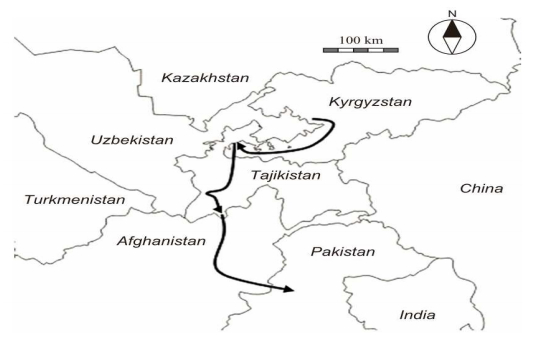
 DownLoad:
DownLoad: 